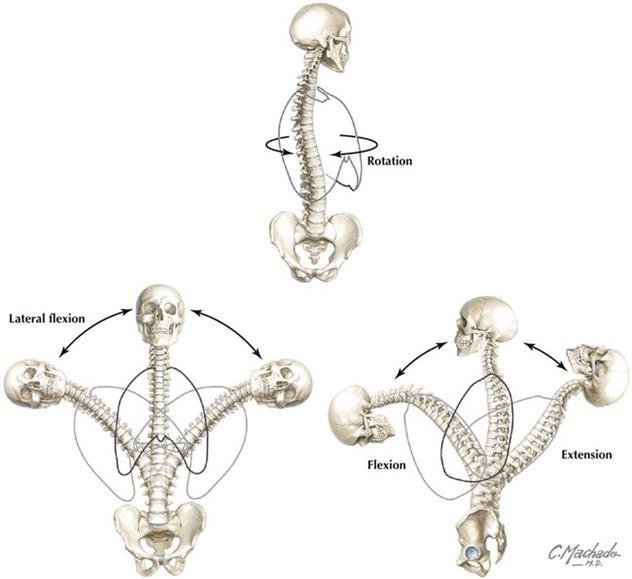Why is the Upper Cervical Spine Vulnerable to Nerve Disruption?
The upper cervical spine is vulnerable to nerve disruption based on anatomical and physiological facts about the spinal column. The spinal column is complex, both in structure and function. To simplify things, let's focus on three aspects of the spinal column: the spinal cord, the spinal canal and spinal mobility.
The spinal cord is the section of the Central Nerve System found within the spinal column. The Central Nerve System includes the brain, brainstem and spinal cord. The spinal cord is the main conduit of nerve information between the brain and the body. Because of this, the spinal cord has a great concentration of nerve fibers.
Nerve fibers, or axons, are long projections off a nerve cell that transmits electrical signals. The Central Nerve System uses nerve fibers to send and receive messages. These messages are vital for muscle movement, organ regulation, sensation and perception. This is critical to health and homeostasis.
The greatest accumulation of nerve fibers found in the spinal cord is at the upper cervical spine level. This is where the spinal cord intertwines with the lower brainstem, the medulla oblongata.
The lower brainstem and upper spinal cord is the switching station for nerve fibers between the brain and spinal cord. Nerve fibers from the brain and the spinal cord convene here to organize, relay and integrate information.
As we travel down the spinal column from the upper cervical spine, the spinal cord overall decreases in size. Nerve fibers branch off the spinal cord in between the vertebral bones on their way down the spine. The opening in between each bone where nerves come off the spinal cord is called an intervertebral foramen, or IVF for short.
Next, let's discuss the spinal canal.
The spinal canal is the passageway for the spinal cord. It is made up of bones, ligaments and other tissue that surrounds and protects the spinal cord. The main protector is the vertebral bones. Bone, or skeletal tissue, is the hardest and most durable tissue in the human body. It protects the softest and most delicate tissue in the body, nerve tissue.
Compared to the rest of the spinal column, the spinal canal diameter is the smallest in the upper cervical spine. Overall, the spinal canal diameter increases in size as it travels downward. The intervertebral foramen (IVFs) also get bigger in size as they go down the spine.
Finally, let’s discuss spinal mobility.
Mobility allows us to better interact with our environment through our senses. The spinal column is involved in the majority of movements the body makes.
The lower we go down the spine, the less mobility we find. The higher we go up the spine, the more mobility we find.
The greatest amount of mobility we have in the spine is at the upper cervical spine. The upper cervical spine alone accounts for 50% of all the movement in the cervical spine.
The more mobility a joint has though, the less stable it is. Less stability means more vulnerability to injury. It is a compromise the body makes.
For example, the shoulder has more mobility than the elbow. This means it is less stable than the elbow. It also means it has the potential to shift out of its normal joint more easily and be injured.
If we consider the facts about the spinal cord, spinal canal and spinal mobility, we can start to draw some conclusions as to why the upper cervical spine has the greatest potential for nerve disruption.
In the upper cervical spine, the spinal cord diameter is the largest and the spinal canal diameter is the smallest. This means that, compared to anywhere else in the spinal column, the bones of the upper cervical spine are in the closest proximity to the spinal cord. Furthermore, the top bones of the spine are nearest to a significant concentration of nerve fibers. And finally, the upper cervical spine is the most vulnerable to injury because it has the greatest mobility of the spinal column.
A specific injury to the upper cervical spine, called a vertebral subluxation, approximates the top bones of the spine even closer to the spinal cord.
A vertebral subluxation is when the bones of the spine shift and lock out of place. This puts added pressure on the surrounding tissue, specifically nerve tissue, and interferes with how it functions.
Quoting Dr. Michael Kale, the upper cervical spine is “more liable to have a possible subluxation with more occlusion; more pressure; more interference to transmission” than anywhere else in the spinal column. Dr. Kale goes on to say that “the location of the fibers that are subject to pressure which supplies the entire body, either directly or indirectly, are in the medulla oblongata in the region of the atlas and axis.”
When nerve function is interfered with, it creates nerve disruption. And nerve disruption negatively effects how messages about muscle movement, organ regulation, sensation and perception are controlled. Health and homeostasis are altered.
- Jarek Esarco, DC, CACCP
Related Blogs:
Can Spinal Adjusting Effect Cranial Nerves? They Do Not Pass Through the Spine.
A Brain Left Without A Right Is No Brain Of Mine





